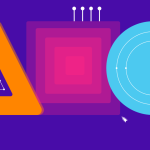
Visual Storytelling: Using Infographics in Web Design
- admin
- 28 November 2023
- Uncategorised
- 0 Comments
In the digital age, where information bombardment is the norm, engaging an audience’s attention is an art. Visual storytelling has emerged as a powerful tool, enabling information to be conveyed effectively and engagingly. Among the myriad forms of visual storytelling, infographics stand out as a dynamic and compelling medium, especially in web design.
What Are Infographics?Infographics are visual representations of information, data, or knowledge. They merge graphics, data points, and concise text to communicate complex ideas swiftly and clearly. Their visual appeal and ability to distill information into digestible snippets have made them incredibly popular across various digital platforms.The Power of Infographics in Web DesignIn web design, the attention span of users is notoriously short. Infographics offer a solution by presenting information in a visually appealing and easily digestible format. They break down complex data sets or concepts, making them more accessible and engaging for visitors.Enhancing User ExperienceInfographics elevate user experience by simplifying the understanding of complex information. Visitors can quickly grasp concepts, statistics, or processes without sifting through dense text. By offering a visually stimulating experience, infographics encourage users to explore the content more deeply.Increasing Shareability and EngagementOne of the strengths of infographics lies in their shareability. People are more inclined to share visually appealing content on social media platforms, leading to increased engagement and wider reach. Incorporating infographics into web design can enhance a site’s virality, amplifying its impact across various online communities.Improving Brand CommunicationInfographics are versatile tools for brand communication. They allow businesses to convey their brand story, showcase products or services, and highlight achievements in a visually compelling manner. A well-designed infographic can leave a lasting impression and strengthen brand recall.Best Practices for Infographics in Web DesignCreating impactful infographics requires adherence to certain best practices:
Clarity and Simplicity: Keep the design simple, ensuring that information is easy to understand at a glance.Visual Hierarchy: Arrange elements logically, guiding the viewer’s eye through the infographic’s key points.Consistency: Maintain a consistent design style, color scheme, and typography to reinforce brand identity.Responsive Design: Ensure infographics are responsive to different screen sizes for optimal viewing across devices.Storytelling: Infographics should tell a cohesive story, guiding the audience through a narrative flow.
Incorporating infographics into web design enhances user engagement, simplifies complex information, and strengthens brand communication. As attention spans dwindle in the digital realm, the strategic use of infographics emerges as a vital tool for effective visual storytelling on the web. By harnessing the power of infographics, web designers can captivate audiences and deliver compelling narratives that resonate in an ever-evolving online landscape.



